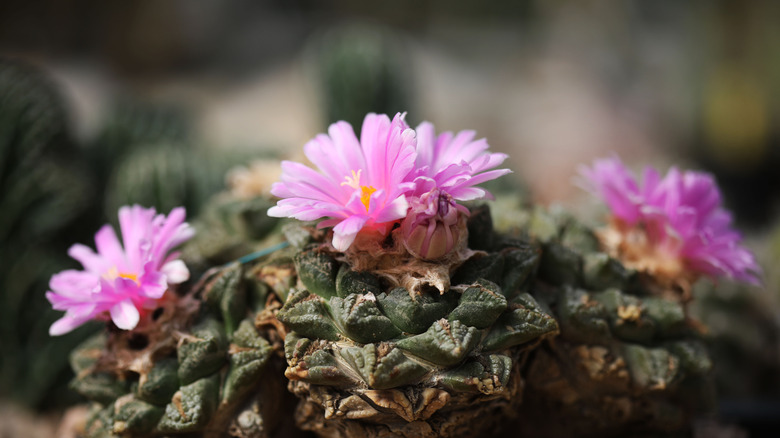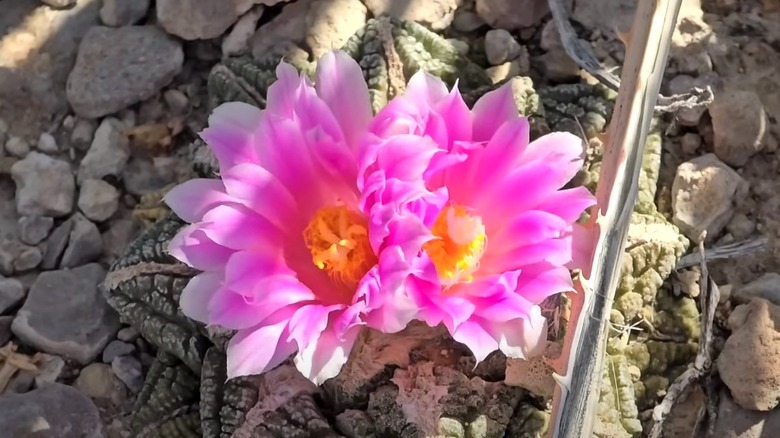The Stunning And Unique Cactus You Can Only Find In Texas
We may receive a commission on purchases made from links.
Most outdoor enthusiasts are aware that certain species of animals are threatened or endangered, making them not only protected by law but also somewhat rare to see in the wild. Perhaps not as many realize there are also plants which are similarly scarce. One example is the living rock cactus, which is highly sought after by smugglers, despite — or perhaps because — of its protected status.
It is hard to imagine when looking at this unassuming, spineless cactus. In fact, you may not even realize it's a plant when you are looking at it unless it happens to be in bloom. That's because living rock cacti are renowned for their ability to camouflage themselves by blending in with the surrounding rocks — hence the name. Those flowers typically appear in fall and can vary in color from pink to purple to red, with yellow, filament-filled centers.
Living rock cactus grows extremely slowly, often taking plants decades to reach maturity. That's even more astonishing when you consider a full grown living rock cactus only measures an inch or two tall with a half-foot diameter. However, this slow growth has made the population all that much more susceptible to being wiped out by smugglers, which have been poaching plants at an increased level despite its protection under the Convention on International Trade in Endangered Species of Wild Flora and Fauna, or CITES. This status makes it illegal to sell these plants outside the U.S., as smugglers often do, selling them to collectors in Europe and Asia.
Big Bend is the place to be if you want to see living rock cactus
According to the U.S. Fish & Wildlife Service, while you can buy legally harvested or raised living rock cactus as well as seeds to cultivate (although it's crucial to verify permits and ethical sourcing), if you want to see them in their natural environment, there is only one place to do so in the U.S. — Texas. Even within the Lone Star State, living rock cacti are limited in where they can be found. They only live in the Big Bend region of West Texas, which is part of the Chihuahuan Desert. While much of the land in this area is private, there is also plenty of public land, specifically in the form of Big Bend National Park.
Big Bend National Park is by far the best place to view these tiny, threatened cacti. Visitors heading that way should be aware, however, that Big Bend is considered one of the most dangerous national parks in the U.S., largely due to its remoteness and rugged terrain. So, before embarking on a hiking adventure to view living rock cacti in Big Bend, be sure you have the 10 hiking essentials, including water and first aid kit. It is also recommended to have a satellite communication device, such as the Garmin inReach Mini 2, as you are likely to be hiking in an area with no cell service.
Also keep in mind not being aware of the rules is one of the biggest mistakes people make when visiting national parks. When it comes to living rock cacti, not knowing or following those rules can land you in jail and/or paying a hefty fine. Again, this plant is rare and protected. It is not allowed to be collected or harvested on public land. In the park, it is illegal to remove parts of the plant, dig them up, or disturb them in any way.

